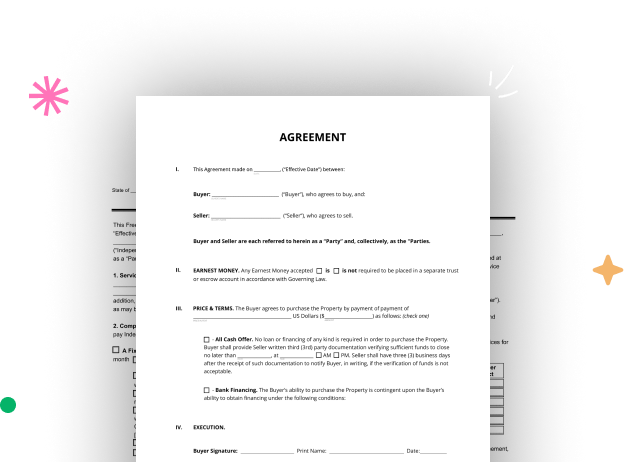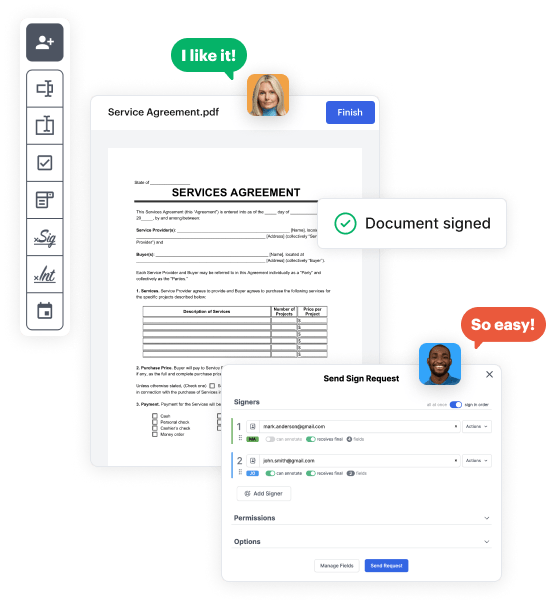

Start by creating a free DocHub account using any offered sign-up method. Just log in if you already have one.
Try out the whole suite of DocHub's advanced tools by signing up for a free 30-day trial of the Pro plan and proceed to build your Wyoming Real Estate Deed.
In your dashboard, select the New Document button > scroll down and hit Create Blank Document. You will be redirected to the editor.
Use the Page Controls icon marked by the arrow to switch between two page views and layouts for more convenience.
Explore the top toolbar to place document fields. Add and configure text boxes, the signature block (if applicable), add photos, and other elements.
Arrange the fillable areas you added per your chosen layout. Personalize the size, font, and alignment to ensure the form is user-friendly and neat-looking.
Save the ready-to-go copy in DocHub or in platforms like Google Drive or Dropbox, or craft a new Wyoming Real Estate Deed. Share your form via email or get a public link to reach more people.